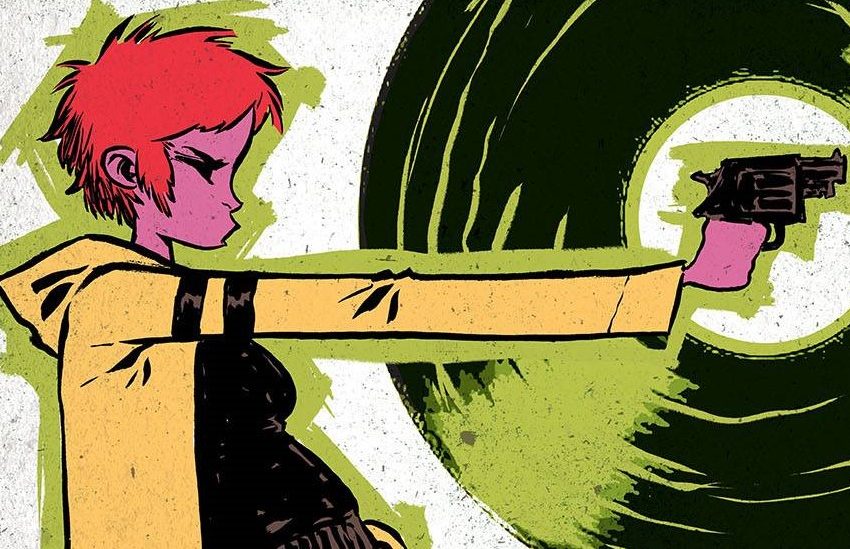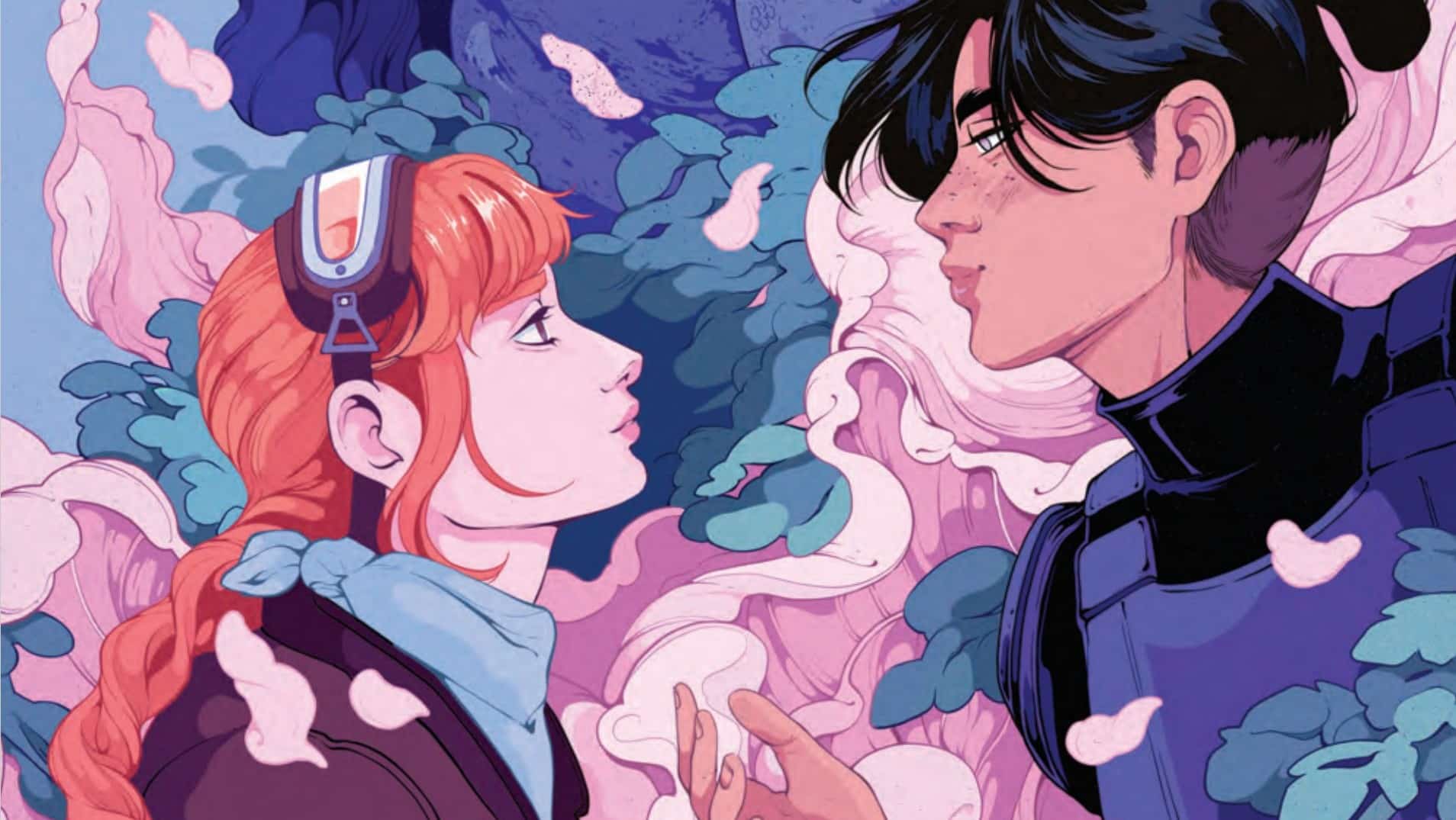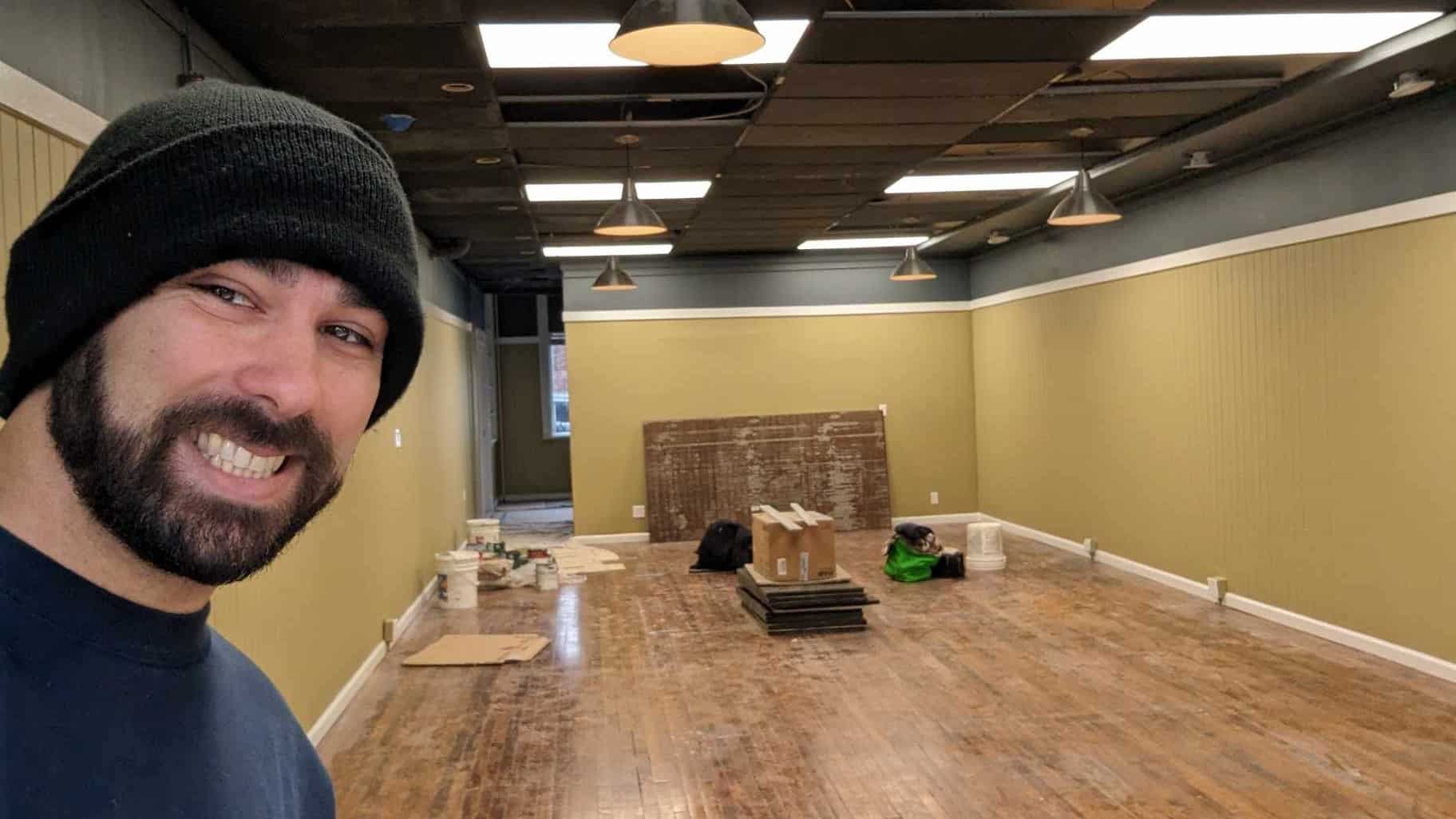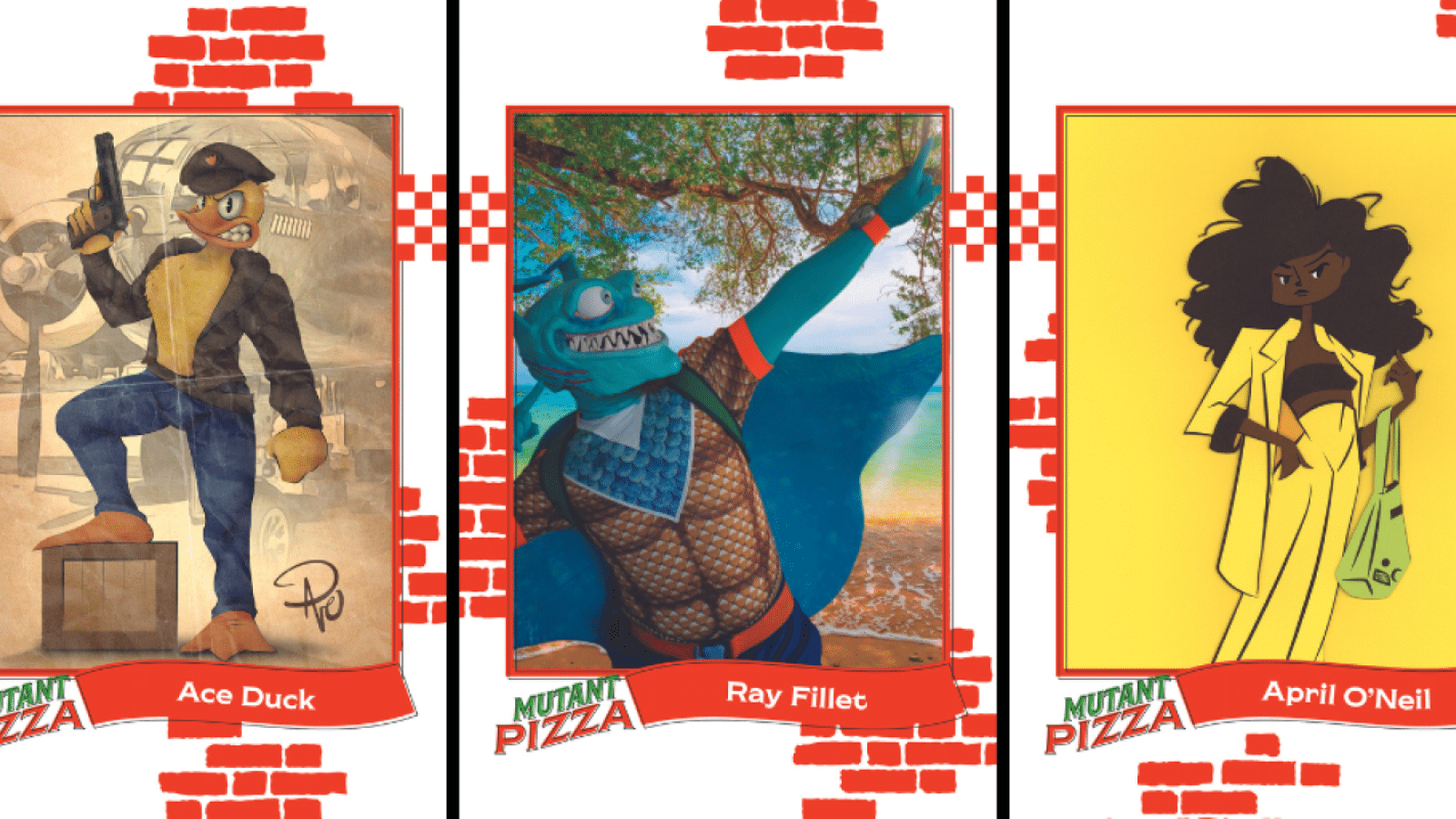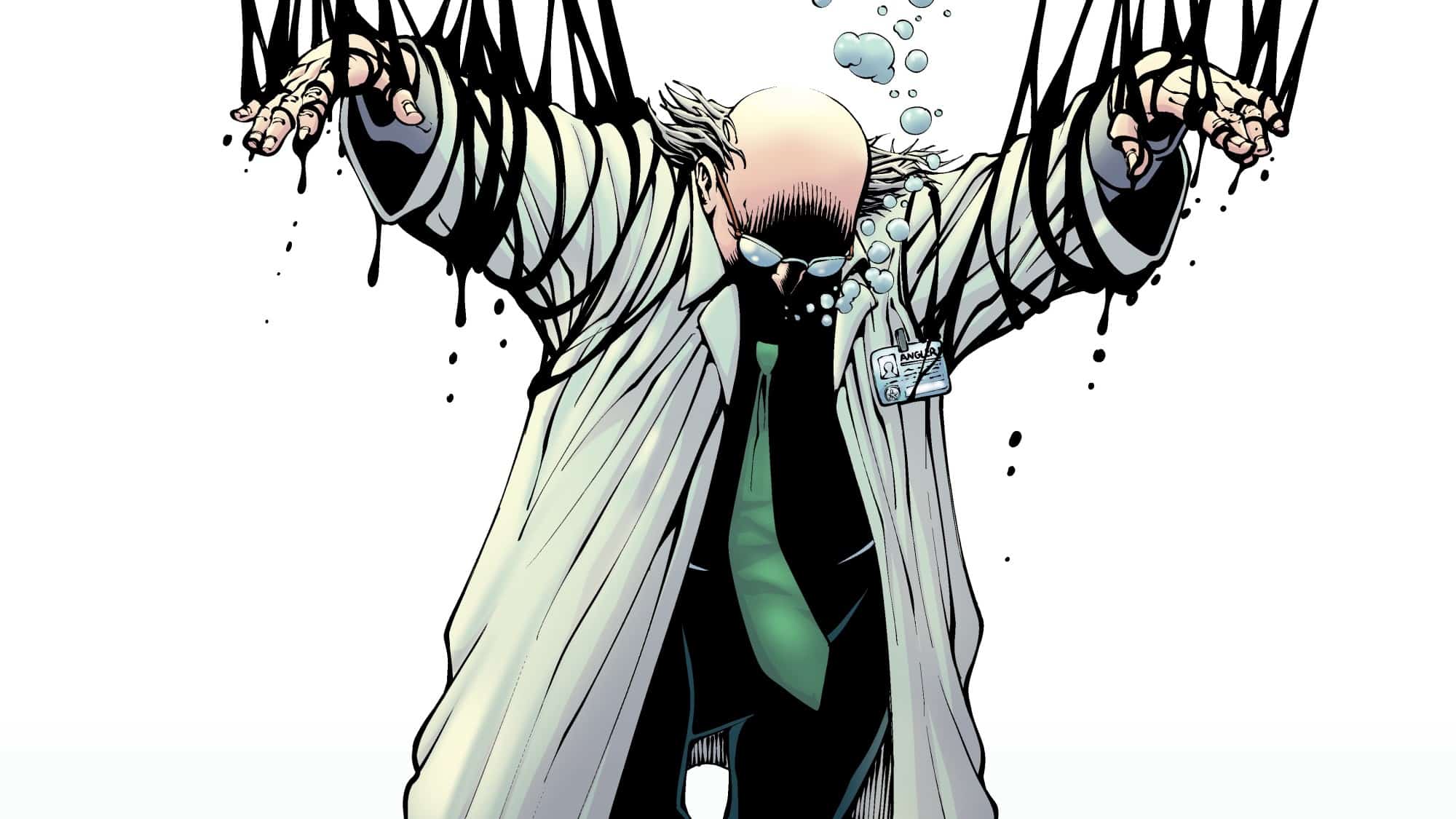What’s the Furthest Place From Here?, the newest project from artist Tyler Boss and writer Matthew Rosenberg, is a story about a lost generation of kids growing up in the ashes of the apocalypse and how they define themselves. A sprawling tale, set to its very own soundtrack, it represents a new direction for the pair. Rosenberg said that after teaming up on 4 Kids Walk Into a Bank in 2016, the pair wanted to capture the same feeling while tackling something completely new.
“Instead of a tight five-issue crime caper with hints of comedy and a small cast set in a semi-real world, we are doing a sprawling ongoing sci-fi/fantasy adventure story with hints of horror (and comedy) and a big cast set in a post-apocalyptic world. But the challenge has been making sure it is still full of heart and humor and is still character-driven and feels like ’us,’ which I feel like we pulled off,” Rosenberg told ComicsXF this week.
Published by Image Comics, What’s the Furthest Place From Here has a final order cutoff of Oct. 4, and is set to be released on Nov. 11, with the second issue coming on Dec. 22.
In addition to several variants, a deluxe edition of the book will include an exclusive cover and a 7″ record with two songs from some classic and contemporary indie and punk bands, recorded specially for the project. For the first issue, punk rock legend Blake Schwarzenbach (Jawbreaker, Jets to Brazil) and rising star Joyce Manor produced two songs. Songs from Screaming Females and punk upstarts the Warriors will accompany issue two.

A love letter to the things that shape us, “What’s the Furthest Place From Here” starts off following Sid, one of many now-grown children of the apocalypse. Cowering with her gang inside an old record shop, she’s an example of how Boss and Rosenberg approached world-building for the book.
“Early on we had this idea of the kids living in the record store and being punks. There is a strong narrative reason for it as the story goes, and it’s a pretty obvious homage to a lot of movies that are a big influence on us like Mad Max, Suburbia, and Repo Man. It’s really also a simple character design choice,” Rosenberg? says. “But from that spins this fun game of informing that world and who these kids are, and so the records are a big part of that, defining them. Not in the way that our musical taste sort of informs a lot of who we are. In the world of What’s The Furthest Place From Here? it goes much deeper than that. So we had a lot of fun playing with what the records that would define these characters be.”
Rosenberg said while tackling a post apocalyptic story isn’t exactly new, he wanted to pay homage to the end of the world pop culture from the early 1980s while looking at it from a new vantage point.
“We’re entering a new era of looking forward and having a hard time envisioning the future but so much of the fiction I see around that, especially apocalyptic stuff, doesn’t focus on kids. So the idea of doing a post-apocalyptic coming-of-age story as we enter a time where kids are coming of age in what they’re being told is a pre-apocalypse just felt important to me,” he said. “Tyler and I wanted to make something about kids who don’t have futures, who don’t have a world ahead of them that offers any comfort, but they are still fighting to make things better and still holding onto these ideas of community, and friends, and found family that are so important.”
Music plays a major role in the book, and Rosenberg said he started off with his desire to connect music with comics and vice versa. Early on, the protagonist, Sid, is offered a choice between picking between two very different albums that her friends say “will define her.”

“So Sid, one of our main characters, is offered a choice — Hall & Oates or SSD. That act of picking that is sort of played for comedy and absurdity, is also very real in the context of the story and we wanted to make the differences feel stark,” Rosenberg says. “The first issue alone features a lot of different records like Husker Du, John Coltrane, Talking Heads, and Meatloaf. But early on we wanted to have a moment where the choice is laid out really starkly about who these kids are.”
Rosenberg said he arrived at Hall and Oates and SS Decontrol for a couple of reasons.
“I wanted to pick two different albums that I loved. There’s more to say about that and how it relates to the themes of the story, but I think I’ll let people read it first,” he explains. “[Music and comics] are two big passions of my life but more than that I believe they really complement and augment each other really well. So some of it is just me putting the things I love into my work. And talking about it, I tend to get pretty sentimental, but there are two big things with the music in this book that really resonate with me and I think will with others as well.”
A former clerk at both comic and record stores, Rosenberg said he still sees them as magical places that can be transporting and transformative.
“So of course in our post-apocalyptic story we want to play with that idea, the record as this magical item. We don’t actually say that the kids listen to the records, they just love and respect them.
That idea carries over into the world as a whole, he said. The various gangs who live in the businesses and utility buildings around town start to take on the personalities of the buildings, or at least what they imagine them to be, Rosenberg explained.
“So the kids who live in the bank all collect, trade, and hoard things they perceive to have value. The kids who live in the police station run around beating people up and enforcing their own rules,” he said. “And it goes on like that. But at their core, each one has something that is at least loosely related to practically surviving the apocalypse. Trading, laws, things like that. But our characters live in a record store and love records and that’s not what we’d classically consider practical in the end of the world. But I love the idea of devoting your time at the end of the world to art and beauty. Sentimental, but I know that art and music is what has helped me survive a lot of times when I wasn’t sure I could, so it feels right to me.”
With a name taken directly from the song “Accident Prone” by Jawbreaker, What’s the Furthest Place From Here?, was always meant to be a nod to Rosenberg’s favorite bands, but became much more after he reached out to the band to ask for their blessing.

“I had some friends in common with their frontman Blake so I emailed him and talked with him about the book and he was so incredibly kind. He talked with the rest of the band about it and they were all cool with it,” he said.
Rosenberg had been playing with the idea of creating 7″ records with bands that were a big influence on the making of the book and mentioned the idea to Schwarzenbach, who seemed excited.
“The idea was [that] it support indie comic shops coming out of lockdown and hopefully put new people in comic shops and put comics into the fans of record collectors and records into the hands of comic collectors…,” Rosenberg said. “And the next thing I know he’d sent me a song and I was just blown away. It’s such an honor. It’s also fun because about once a week someone comes at us to be like “you took that title from a Jawbreaker song! Gotcha!” and we get to smile and say “Yeah, you figured it out.”
Dana Forsythe
Dana Forsythe is a freelance writer covering art, culture, tech and comic books.

